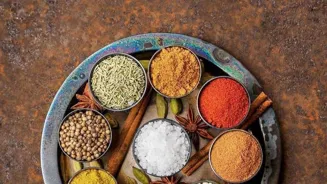The Cooking Oil Spectrum
The heart of Indian cooking is, no doubt, the oil. The oils that are used are as diverse as the country itself, and the impact they have on the body are crucial
to understand. Many households use a variety of oils, including the traditional mustard oil, which is quite popular in Eastern India, coconut oil, which is favored in the South, and groundnut oil that is used extensively in the West. Modern kitchens are also leaning toward refined oils, such as sunflower, rice bran and canola, often marketed as healthier choices. The versatility of these options meets the demands of various regional dishes, each carrying unique profiles that influence flavor and nutritional value. The selection of oil, however, goes beyond taste; it also has significant implications on cardiac health. The saturated, monounsaturated, and polyunsaturated fats present in these oils play a crucial role in influencing the body's cholesterol levels. These fats subsequently affect the chances of developing heart disease, which requires thoughtful and well-informed choices by Indian cooks.
Fats and Heart Health
The types of fats that are present in cooking oils directly impact heart health. Saturated fats, often found in significant amounts in coconut oil and ghee, can elevate LDL cholesterol levels, also known as 'bad' cholesterol. Elevated LDL levels are linked to an increased risk of heart disease. In stark contrast, unsaturated fats, particularly monounsaturated and polyunsaturated fats, are frequently associated with positive impacts on heart health. Oils rich in monounsaturated fats, like olive oil and groundnut oil, have the potential to help lower LDL cholesterol while possibly raising the levels of HDL cholesterol, or 'good' cholesterol. Polyunsaturated fats, found in oils such as sunflower and soybean, can also contribute to lower LDL cholesterol. Understanding the role of these fats is very important. It is helpful in making healthier choices that support heart health. These choices can lead to dietary adjustments that may decrease the chances of heart disease, thereby supporting the general health and well-being for those who cook Indian food.
Regional Oil Preferences
Indian culinary traditions vary greatly and these differences are deeply rooted in cooking oil preferences. Mustard oil, a staple in Eastern India, is known for its strong flavor and is associated with traditional cooking methods. Coconut oil, a common choice in Southern India, adds a distinct taste to regional dishes and is used frequently. Groundnut oil is favored in Western India and is chosen for its high smoke point and its neutral taste. Sunflower, soybean, and rice bran oils have become increasingly popular across India, often marketed as lighter, healthier alternatives. These variations in regional oil use reflect both taste preferences and the availability of resources. They also highlight the need for tailored dietary advice that considers the specific oils used in different regions. Understanding these regional differences is key to creating customized recommendations for improving heart health through cooking oil choices.
Smoke Point Matters
The smoke point of cooking oil is a critical factor, especially in high-heat Indian cooking. The smoke point is the temperature at which the oil begins to break down and release harmful compounds, including free radicals. These free radicals can contribute to inflammation and cellular damage, which in turn increase the risk of heart disease. Oils with higher smoke points, such as groundnut, rice bran, and avocado oil, are well-suited for deep frying and other high-temperature cooking methods. These oils maintain their stability at higher temperatures, reducing the release of harmful substances. Oils with lower smoke points, like flaxseed or unrefined olive oil, are better suited for lower-heat cooking methods such as sautéing or using in salads. Choosing the right oil based on the planned cooking method ensures that meals are not only flavorful but also healthy, preventing the introduction of undesirable compounds. When combined with appropriate cooking practices, these measures can help maintain heart health.
Heart-Healthy Cooking Tips
To promote heart health while cooking Indian food, several practical tips can be followed. Choosing oils that are rich in unsaturated fats, such as olive, groundnut, sunflower, and rice bran oils, is a great starting point. Using these oils in moderation is important; a small amount can go a long way in enhancing the flavor of dishes without compromising health. It's also important to avoid reusing oil, as this raises the concentration of harmful compounds. Methods like baking, grilling, and steaming can minimize the need for excessive oil. Incorporating spices and herbs, which can improve the flavor of the food and have antioxidant qualities, can also be beneficial. When making curries, try using less oil in the initial tempering process, and allowing the vegetables and spices to cook at a lower heat. By implementing these easy adjustments, Indian cooks can significantly reduce the amount of saturated fat in their cooking, and promote cardiovascular well-being without changing the taste of their beloved dishes. These adjustments may help individuals who are managing cardiac concerns and who also enjoy Indian cuisine.
Beyond the Oil
While cooking oil is a key element, a holistic approach to heart health involves various dietary and lifestyle considerations. Along with making informed oil choices, it is equally important to focus on a well-balanced diet rich in fruits, vegetables, whole grains, and lean proteins. Fiber-rich foods help to lower cholesterol levels. Regular physical activity and maintaining a healthy weight are also very important for maintaining heart health. Regular check-ups and monitoring of cholesterol levels can also assist in managing heart health. Limiting the consumption of processed foods, sugary drinks, and excess salt is equally beneficial. By taking these overall lifestyle considerations into account, individuals can enhance their cardiovascular wellness beyond the choice of cooking oil. This comprehensive approach promotes a more sustainable and effective strategy for heart health.






